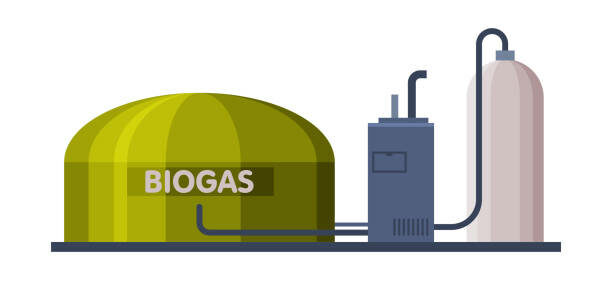Biogas Solutions
Engineering Innovate Solutions. Inspiring Sustainable Choices.
Biogas can be utilised as a renewable and environmentally friendly energy source. Biogas is obtained thanks to the anaerobic digestive reaction of renewable raw materials including biomasses, animal waste and agro-industrial waste disposals. Biogas can be purified and upgraded, to be recycled in co-generators or used as LNG gas – reducing overall carbon emissions whilst recycling the potential energy from waste biogas.
Before entering the co-generators or distribution lines, biogas must be appropriately dried and filtered. This is to maximise the energy yield from the biogas, as well as to protect the system from corrosion. That’s where AFE’s compressed air treatment products come in, from compressed air dryers, replacement desiccant, to full design and installation of a PSA system.
Biogas Treatment
Bio-methane from Palm Oil Mill Effluent (POME) – POME, released during palm oil processing in palm oil mills, undergoes anaerobic digestion resulting in uncontrolled release of biogas (60-70% CH4, 30-40% CO2). Methane (CH4) has global warming potential 21 times greater than CO2, causing greater damage despite its shorter half-life. Each mill emits on average 3288 tCH4yr-1, equivalent to annual emissions from 22,000 cars. With AFE’s PSA system, the bio-methane can be upgraded to Compressed Natural Gas (CNG) standards, which can then be compressed, transported and supplied into existing natural-gas grids. Through AFE’s energy efficient method of upgrading biogas to bio-methane, clean energy can be utilized whilst reducing carbon emissions.
Biogas from renewable agriculture sources - Biomass originating from various sources (animal waste, energy crops) ferment in the absence of oxygen and at a defined temperature, within specific digesters. The result is a biogas mixture made up of 50-70% CH4 and 30-50% CO2. The combustion of this Biogas in a co-generator (CHP) allows thermal and or electrical energy to be obtained. However, the biogas must be purified beforehand, to eliminate water vapour, and dangerous substances such as H2S and siloxanes.
Biogas from organic wastes or sewage plants - The anaerobic decomposition of organic substances within landfill disposals or sewage plants leads to the production of biogas. The biogas which is extracted by means of recovery wells and blowers, is full of vapour and polluting agents, which must be purified before being fed into the CHP.
 Credit: Top Vectors
Credit: Top Vectors
AFE's Biogas PSA Solution.
At AFE we specialise in the Pressure Swing Adsorption (PSA) technique to separate CO2 from the biogas. Depending on the material used, the process can remove CO2, H2S, moisture and other selected impurities. Apart from the PSA system, our wide range of treatment products can help remove contaminants in any biogas plant.
Mitigate climate change with our biogas solutions.
Let's discuss the possibilities.
Related Products
Explore AFE products related to this sector.
Other Sectors
Explore industry solutions in other sectors.
In many semiconductor and electronics industries, compressed air is often used in sensitive high-tech equipment to process and manufacture electronic components. Contamination of compressed air can lead to costly complications.
In the chemical industry, toxic, corrosive and unstable gases are common parts of the production process, making the requirements for compressed air quality strict. This is vital to maintain product purity, to ensure customers the highest quality chemicals.
The core functions of compressed air system in railway include trains breaks systems, suspensions, doors and various other equipment. AFE offers a variety of reliable solutions for trouble-free operations.
The ship’s compressed air system provides compressed air for generators, main engine start-up, submarine door debris removal, and other places on-board that need compressed air.
